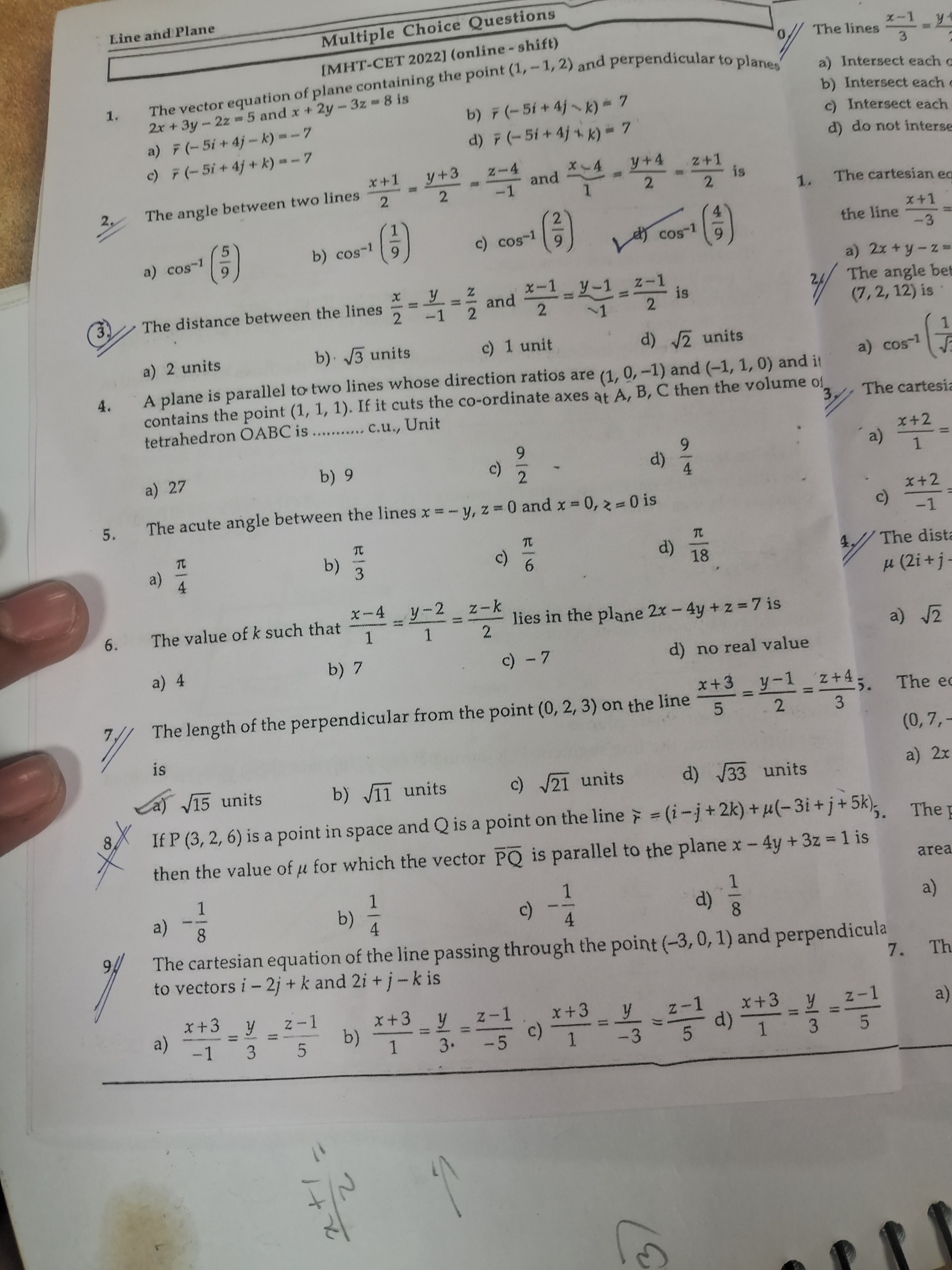Question
Question: The vector equation of plane containing the point (1, -1, 2) and perpendicular to planes 2x + 3y - 2...
The vector equation of plane containing the point (1, -1, 2) and perpendicular to planes 2x + 3y - 2z = 5 and x + 2y - 3z = 8 is

A
r.(−5i+4j−k)=−7
B
r.(−5i+4j+k)=7
C
r.(−5i+4j+k)=−7
D
r.(−5i+4j+k)=7
Answer
r.(−5i+4j+k)=−7
Explanation
Solution
The normal vectors of the given planes are n1=(2,3,−2) and n2=(1,2,−3). The normal vector to the required plane is the cross product of these two vectors:
n=n1×n2=i21j32k−2−3=(−9+4)i−(−6+2)j+(4−3)k=−5i+4j+k.
So, the normal vector is (−5,4,1). The equation of the plane is given by r⋅(−5i+4j+k)=d. Since the plane contains the point (1, -1, 2), we have:
d=−5(1)+4(−1)+1(2)=−5−4+2=−7.
Thus, the equation of the plane is r⋅(−5i+4j+k)=−7.
